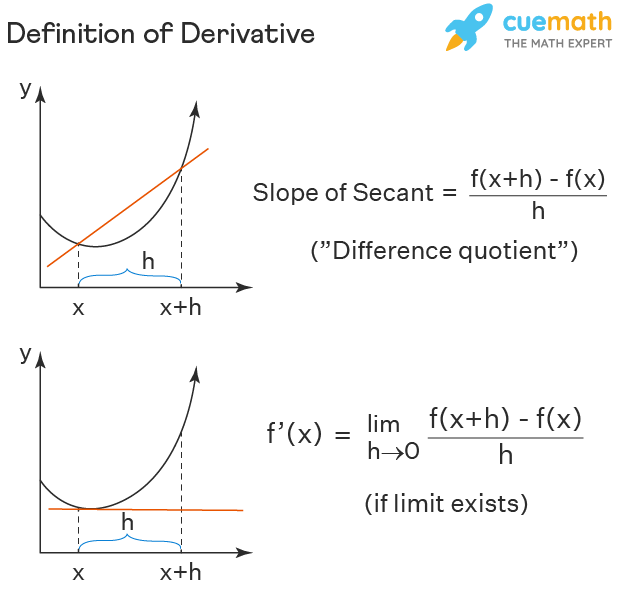
Demystifying Derivatives: Your Essential Guide to Understanding Financial Contracts
The world of finance can often feel like a labyrinth of complex terms and intricate instruments. Among the most talked about, and often misunderstood, are derivatives. For beginners, the very word can conjure images of high-stakes trading and bewildering calculations. But fear not! This comprehensive guide is designed to cut through the jargon, making derivatives accessible, understandable, and even fascinating.
By the end of this article, you’ll have a clear grasp of what derivatives are, why they exist, how they work, and their role in the global financial landscape.
What Exactly Are Derivatives? The Core Concept Explained
At its heart, a derivative is a financial contract whose value is derived from an underlying asset, group of assets, or benchmark. Think of it like this:
- Imagine a contract to buy a house in six months. The value of that contract isn’t inherent; it depends entirely on the future price of the house. If the house price goes up, your contract to buy it at a lower, pre-agreed price becomes more valuable. If it goes down, your contract might become less appealing.
- The house is the "underlying asset," and the contract is the "derivative."
Key Characteristics of Derivatives:
- Value is Derived: The most crucial point. Their worth isn’t standalone; it’s linked to something else.
- Contractual Agreement: Derivatives are formal agreements between two or more parties.
- No Immediate Exchange of Asset: Unlike buying a stock or bond outright, you don’t typically own the underlying asset immediately when you enter a derivative contract. You’re agreeing to terms for a future transaction or cash flow exchange.
- Versatile Underlying Assets: The "something else" can be almost anything:
- Stocks: Shares of a company.
- Bonds: Debt instruments.
- Commodities: Raw materials like oil, gold, corn, coffee.
- Currencies: Exchange rates between different monies (e.g., USD/EUR).
- Interest Rates: Like the LIBOR or SOFR rate.
- Market Indices: Such as the S&P 500 or Nasdaq 100.
Why Do Derivatives Exist? The Core Purposes
Derivatives aren’t just complex financial tools; they serve critical functions in the economy. Their existence primarily boils down to three main purposes:
-
Hedging (Risk Management):
- The primary use. Companies and investors use derivatives to protect themselves against adverse price movements in their assets or liabilities.
- Example: An airline knows it will need to buy millions of gallons of jet fuel in six months. It can use a derivative (like a futures contract) to lock in a price today, protecting itself from a sudden spike in oil prices. If oil prices go up, the value of their derivative contract goes up, offsetting the higher cost of fuel. If oil prices go down, they miss out on cheaper fuel, but they’ve achieved price certainty.
-
Speculation (Profit Generation):
- Traders use derivatives to bet on the future direction of an underlying asset’s price. If they believe a stock will go up, they might buy a derivative that profits from that increase.
- Note: Speculation inherently involves higher risk, as losses can be magnified, especially with leverage.
-
Arbitrage (Exploiting Price Discrepancies):
- Sophisticated traders look for small price differences between the underlying asset and its derivative, or between similar derivatives in different markets. They simultaneously buy the undervalued asset/derivative and sell the overvalued one to lock in a risk-free profit.
- This activity helps to ensure that prices across different markets remain consistent and efficient.
-
Leverage:
- Derivatives often allow investors to control a large amount of an underlying asset with a relatively small amount of capital. This amplifies both potential gains and losses.
- Example: With a stock option, you might control 100 shares of a company for a fraction of the cost of buying the shares outright. If the stock moves in your favor, your percentage return can be significantly higher. If it moves against you, your percentage loss can also be much greater, potentially losing your entire initial investment.
The Main Types of Derivatives
While there are many variations, most derivatives fall into one of four main categories:
1. Futures Contracts
- Definition: A standardized legal agreement to buy or sell a specific quantity of an underlying asset at a pre-determined price on a specified date in the future.
- Key Features:
- Standardized: Terms (quantity, quality, delivery date) are fixed by an exchange.
- Exchange-Traded: Traded on organized exchanges (e.g., CME Group, ICE).
- Obligatory: Both parties are obligated to fulfill the contract at expiration.
- Mark-to-Market: Profits/losses are typically settled daily.
- Common Underlying Assets: Commodities (oil, gold, corn), financial instruments (stock indices, interest rates), currencies.
- Example: An oil producer wants to lock in a price for their crude oil. They sell a futures contract, agreeing to deliver 1,000 barrels of oil in three months at $80 per barrel. A refiner buys that contract, agreeing to pay $80 per barrel. In three months, regardless of the spot price of oil, the transaction occurs at $80.
2. Forward Contracts
- Definition: Similar to futures, but they are customized, over-the-counter (OTC) agreements between two parties.
- Key Features:
- Customizable: Terms (quantity, quality, delivery date) can be tailored to the parties’ needs.
- OTC (Over-the-Counter): Not traded on an exchange; negotiated directly between parties.
- Obligatory: Both parties are obligated to fulfill the contract.
- Settlement at Expiration: Typically settled at the end of the contract term.
- Common Use: Often used by corporations for currency hedging or specific commodity deals.
- Example: A U.S. company expects to receive a payment of 1 million Euros in six months. They are worried the Euro might weaken against the dollar. They enter a forward contract with a bank to exchange 1 million Euros for U.S. dollars at a fixed rate in six months, eliminating currency risk.
3. Options Contracts
- Definition: A contract that gives the buyer the right, but not the obligation, to buy or sell an underlying asset at a specific price (the strike price) on or before a certain date (the expiry date).
- Key Features:
- Right, Not Obligation: This is the defining feature. Buyers pay a "premium" for this flexibility.
- Two Types:
- Call Option: Gives the buyer the right to buy the underlying asset. Used when expecting the price to rise.
- Put Option: Gives the buyer the right to sell the underlying asset. Used when expecting the price to fall.
- Premium: The price the buyer pays for the option. This is the maximum loss for the buyer.
- Strike Price: The pre-determined price at which the underlying asset can be bought or sold.
- Expiry Date: The date after which the option contract is no longer valid.
- Common Use: Speculation, hedging portfolios, income generation (for sellers).
- Example (Call Option): You believe XYZ stock, currently at $100, will go up. You buy a call option with a strike price of $105 expiring in 3 months for a premium of $5 per share (meaning $500 for a contract covering 100 shares).
- If XYZ goes to $120, you can exercise your right to buy shares at $105 and immediately sell them at $120, making a profit (minus the premium).
- If XYZ stays below $105, you simply let the option expire worthless, losing only your $500 premium.
4. Swaps
- Definition: An agreement between two parties to exchange sequences of cash flows over a period of time. The cash flows are usually based on a notional principal amount.
- Key Features:
- Exchange of Cash Flows: Parties exchange payments based on different calculation methods.
- OTC: Typically customized and negotiated directly between financial institutions or corporations.
- Notional Principal: A reference amount used to calculate payments, but it’s never actually exchanged.
- Common Types:
- Interest Rate Swaps: Exchanging fixed interest rate payments for floating interest rate payments (or vice versa).
- Currency Swaps: Exchanging principal and/or interest payments in one currency for equivalent payments in another currency.
- Common Use: Managing interest rate risk, hedging currency exposure, gaining exposure to different markets.
- Example (Interest Rate Swap): Company A has a loan with a floating interest rate, but prefers a fixed rate. Company B has a loan with a fixed rate, but prefers a floating rate. They enter a swap agreement where Company A pays Company B a fixed rate, and Company B pays Company A a floating rate on a notional principal amount. Both benefit by effectively converting their loan types.
Key Terms You Need to Know
To navigate the world of derivatives, understanding these terms is crucial:
- Underlying Asset: The asset (stock, commodity, currency, index, etc.) from which the derivative’s value is derived.
- Long: Taking a "long" position means you buy the derivative, betting that the underlying asset’s price will go up.
- Short: Taking a "short" position means you sell the derivative, betting that the underlying asset’s price will go down.
- Strike Price (or Exercise Price): The pre-determined price at which the underlying asset can be bought or sold in an option contract.
- Premium: The price paid by the buyer of an option contract to the seller for the rights granted by the option.
- Expiry Date (or Maturity Date): The date on which a derivative contract expires, after which it can no longer be exercised or traded.
- Margin: A good-faith deposit required from both buyers and sellers of futures contracts (and sometimes options) to ensure they can meet their obligations. It’s a form of collateral.
- Leverage: The ability to control a large amount of an underlying asset with a relatively small amount of capital. It amplifies both potential gains and losses.
- OTC (Over-the-Counter): Refers to derivatives traded directly between two parties without going through a formal exchange (e.g., Forwards, Swaps).
- Exchange-Traded: Refers to derivatives traded on regulated exchanges, which offer standardization and centralized clearing (e.g., Futures, many Options).
Who Uses Derivatives and Why? Practical Applications
Derivatives are not just for Wall Street traders. They are used by a wide range of participants for various strategic reasons:
- Corporations:
- Hedging input costs: An airline hedging jet fuel prices, a food company hedging grain prices.
- Managing currency risk: Companies with international operations use derivatives to lock in exchange rates for future transactions.
- Managing interest rate risk: Companies with variable-rate loans might use swaps to convert them to fixed rates.
- Investors (Individuals and Institutions):
- Portfolio protection: Using options to protect against a decline in stock prices (like insurance).
- Income generation: Selling options to collect premiums.
- Speculation: Betting on price movements to generate profits.
- Diversification: Gaining exposure to commodities or foreign currencies without direct ownership.
- Farmers/Producers:
- Price certainty: Selling futures contracts to lock in a price for their harvest before it’s even planted.
- Banks and Financial Institutions:
- Market Making: Facilitating trades for clients and profiting from the bid-ask spread.
- Risk Management: Managing their own exposure to interest rate, currency, or credit risks.
- Structured Products: Creating complex financial products for clients using derivatives.
The Risks and Rewards of Derivatives
Like any financial instrument, derivatives come with both significant opportunities and considerable risks.
Rewards:
- Effective Risk Management: Derivatives are unparalleled tools for hedging against various financial risks (price, interest rate, currency).
- Enhanced Returns (via Leverage): A small price movement in the underlying asset can lead to a large percentage gain on the derivative investment.
- Access to Diverse Markets: Allows investors to gain exposure to markets (like commodities or currencies) that might otherwise be difficult or costly to access directly.
- Price Discovery: The active trading of derivatives helps in determining the future price expectations of underlying assets.
- Flexibility: Options, in particular, offer a wide range of strategies for different market outlooks (bullish, bearish, neutral).
Risks:
- High Leverage, High Risk: While leverage can amplify gains, it equally amplifies losses. It’s possible to lose more than your initial investment, especially with futures.
- Complexity: Derivatives can be incredibly complex, and understanding their nuances requires significant knowledge and experience. Misunderstanding can lead to substantial losses.
- Market Volatility: Sudden and extreme price swings in the underlying asset can lead to rapid and significant losses in derivative positions.
- Liquidity Risk: Some derivative contracts, especially customized OTC ones, may be illiquid, making it difficult to exit a position without affecting the price.
- Counterparty Risk: In OTC derivatives (like Forwards and Swaps), there’s a risk that the other party to the contract might default on their obligations. Exchange-traded derivatives largely mitigate this through clearinghouses.
- Time Decay (for Options): Options lose value as they approach their expiry date (this is known as "theta decay"), which can erode the value of the option even if the underlying asset’s price moves favorably.
Conclusion: Understanding is Key
Derivatives, though often intimidating, are fundamental instruments in modern finance. They are powerful tools for managing risk, speculating on market movements, and facilitating efficient capital allocation. From farmers hedging their crops to multinational corporations managing currency exposure, derivatives play a vital role in our interconnected global economy.
For beginners, the key is to approach them with caution, a commitment to learning, and a clear understanding of their inherent risks. Start by grasping the core concepts, the different types, and the essential terminology. Never invest in derivatives without fully understanding how they work and the potential downsides.
With proper education and a disciplined approach, derivatives can be a valuable addition to your financial toolkit. They are not just for the pros; they are for anyone willing to put in the effort to understand their intricate, yet logical, mechanics.



Post Comment